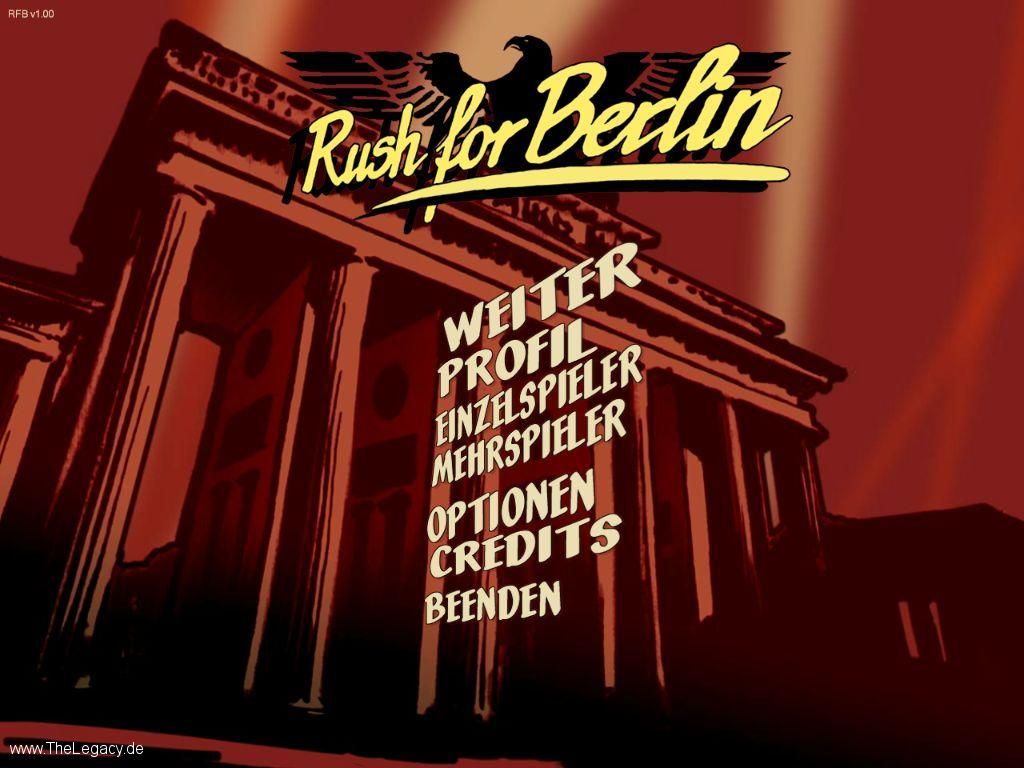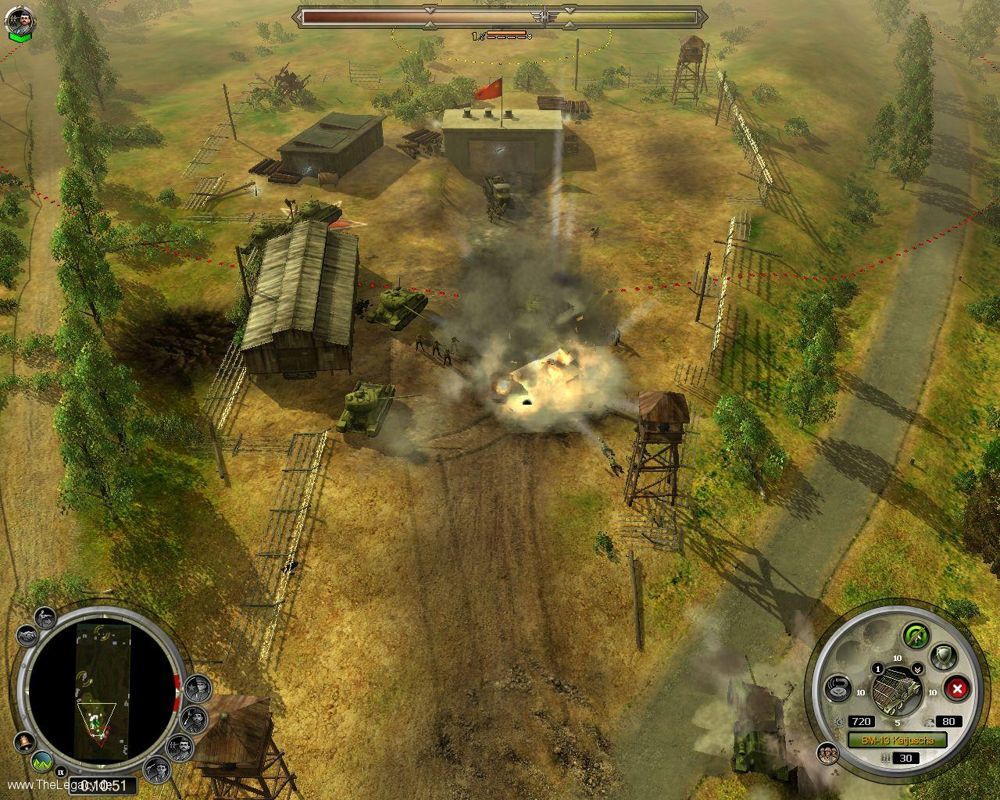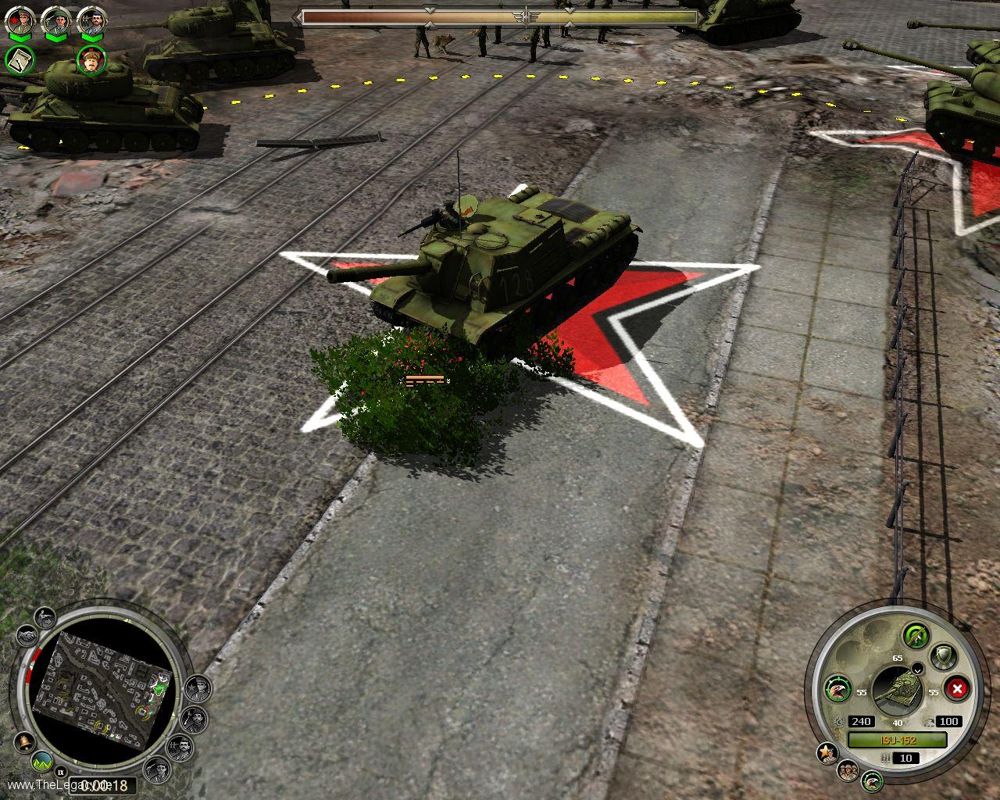Retro Replay Review
Gameplay
Rush for Berlin offers a tense, fast-paced real-time strategy experience across four distinct campaigns. Each mission comes with a strict time limit that forces players to balance aggression with careful planning. From coordinating an American offensive in the Ardennes to leading the Soviet push through Leningrad, the clock is always ticking—and failure to meet objectives in time means defeat for the entire war effort.
The title’s standout mechanic is its emphasis on veteran officers. These units level up over multiple missions, acquiring talents that can turn the tide of battle. Whether it’s the American communications officer momentarily lifting the fog of war or the Russian political commissar bolstering troop morale with extra “vodka,” these characters create meaningful attachment and strategic depth. Losing a seasoned officer can be as punishing as losing an elite tank.
Resource management in Rush for Berlin is refreshingly streamlined: time itself is your only currency. Factories on the map can produce heavy armor—everything from the Soviet JS-2 to the experimental German Maus—so long as you allocate sufficient time. Side objectives reward extra minutes or reinforcements, creating a risk/reward dynamic that keeps each scenario engaging.
Beyond the single-player campaigns lies an online component supporting up to four players in five different modes. Whether you prefer a straight-up skirmish, cooperative play against AI, or specialized scenarios, the multiplayer suite extends the game’s longevity and provides a welcome change of pace from the ticking-clock solo missions.
Graphics
Visually, Rush for Berlin captures the bleak, muddy battlefields of late World War II with remarkable detail. Terrain features like ruined villages, dense forests, and bombed-out factories are rendered with nuanced textures and dynamic lighting. These environmental elements aren’t just for show—they influence line of sight, cover and maneuverability.
Unit models are both historically accurate and aesthetically distinctive. The game showcases well-known vehicles such as the Soviet JS-2 and German Königstiger, alongside “what-if” prototypes like the super-heavy Maus. Animations for tracks, turret rotations, and explosion effects are smooth and realistic, contributing to an immersive frontline atmosphere.
Clarity of information is a strong point: health bars, cooldown timers and officer abilities are displayed unobtrusively, allowing players to stay focused on the action. The camera is flexible, offering overhead strategic views and closer inspections of individual units without sacrificing performance, even in hectic multi-tank engagements.
Story
Set in an alternate 1944 where Claus von Stauffenberg’s assassination attempt has succeeded, Rush for Berlin offers a fresh narrative twist on the closing chapters of WWII. Players first command American forces breaking out of the Ardennes, then switch to Soviet troops lifting the siege of Leningrad. The shifting perspectives keep the campaigns feeling distinct and historically evocative.
The third campaign shifts to the French Resistance in occupied Paris, emphasizing guerrilla tactics and urban combat. In a bold departure, the final campaign has you leading the remnants of the German army, now fighting for survival in a fractured Reich. This role reversal adds moral complexity and challenges players to rethink familiar strategies.
While the storyline remains broadly linear, mission briefings and in-game dialogue provide context and emotional weight to each operation. Characters such as hardened officers and resistance fighters are sketched with enough personality to foster investment without bogging down the gameplay with lengthy cutscenes.
Overall Experience
Rush for Berlin delivers a concise but satisfying RTS package that will appeal to fans of historical strategy and high-pressure gameplay. Its time-based resource system sets it apart from competitors, forcing you to make split-second decisions and rewarding efficient tactics. The persistent progression of officers adds a layer of RPG-style attachment that deepens the single-player experience.
Though the campaigns are relatively short, the varied theaters of war—from dense Ardennes woods to urban Paris streets—and the inclusion of under-theoretical tanks such as the Maus keep each mission fresh. Multiplayer skirmishes extend the game’s lifespan, though they shine brightest when playing cooperatively to tackle AI opponents under time constraints.
Overall, Rush for Berlin is an engaging, well-paced strategy title that balances historical authenticity with inventive gameplay mechanics. If you’re looking for an RTS that challenges both your tactical acumen and your ability to manage scarce resources, this wartime dash to the heart of the Reich is well worth your enlistment.
 Retro Replay Retro Replay gaming reviews, news, emulation, geek stuff and more!
Retro Replay Retro Replay gaming reviews, news, emulation, geek stuff and more!









Reviews
There are no reviews yet.